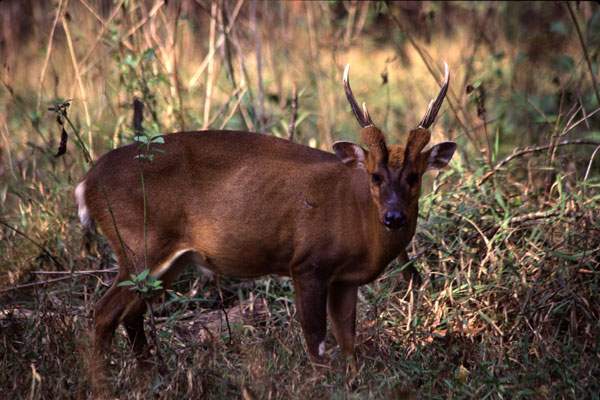Tailor Made Holidays with our travel experts
We'll do our best to call you within 48h

Despite Pu Mat’s important role in providing a safe haven for a wealth of bird, amphibian, mammal and reptile species, rampant poaching in the park is devastating animal populations. Poachers set wire foothold snares indiscriminately to catch ground-dwelling animals for the illegal wildlife trade. Rangers can collect thousands of snares in a single day and if snaring continues at the current intensity, Pu Mat will be emptied of the biodiversity that helps make it one of our planet’s irreplaceable places.
Stemming the tide of poaching will require a much better understanding of the distribution, population and natural history of the region’s hooved mammal (ungulate) communities. Using camera traps extensively across the large and rugged park, GWC and partners are teaming up to conduct the first-ever comprehensive assessment of ground dwelling species across Pu Mat National Park, which will inform our targeted anti-poaching strategy.
Ultimately this project aims to recover the populations of priority species within Pu Mat National Park. We will do this by decreasing the huge threat of indiscriminate poaching that is taking a toll on wildlife, helping to effectively conserve species such as the Saola, Large-antlered Muntjac and Northern White-cheeked Crested Gibbon. With species such as Saola and Large-antlered Muntjac on the very brink of extinction, creating a model where zero poaching is effectively obtained within the Annamite Mountains will not only provide these and other species with a lifeline to survival, but will also act as a model for other sites across the region to work toward.
With the park, and our local university and conservation organization partners, we plan to:
You can help! Support these efforts by making a donation today. Ethnic Voyage Vietnam works closely with World Wildlife Conversation